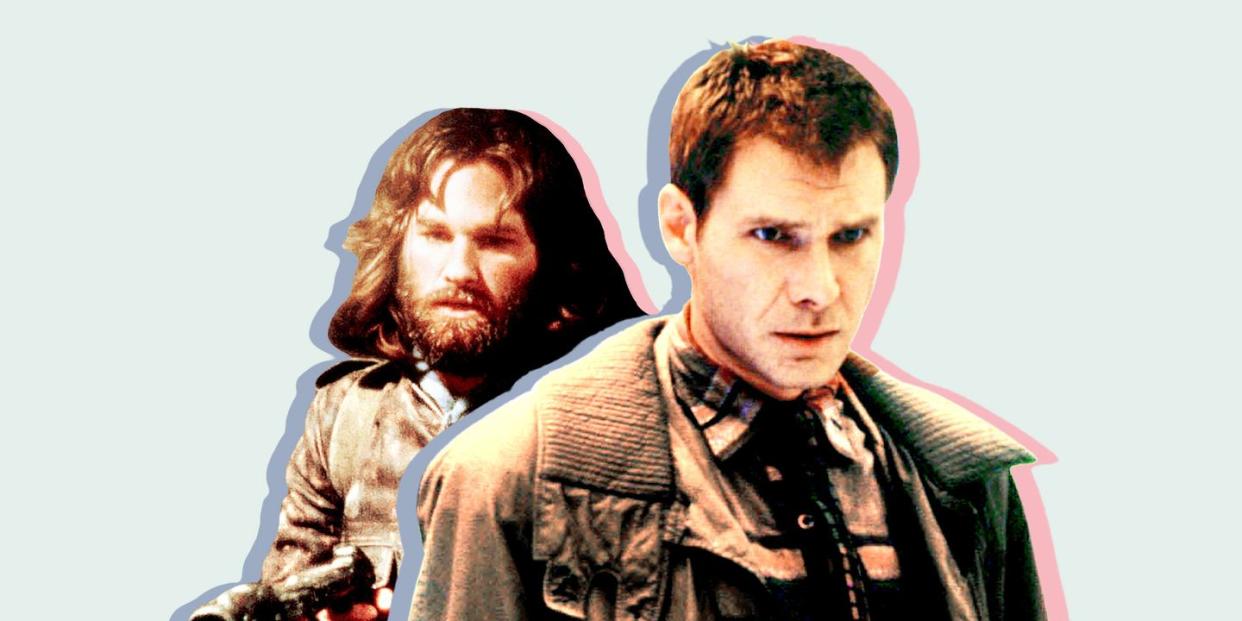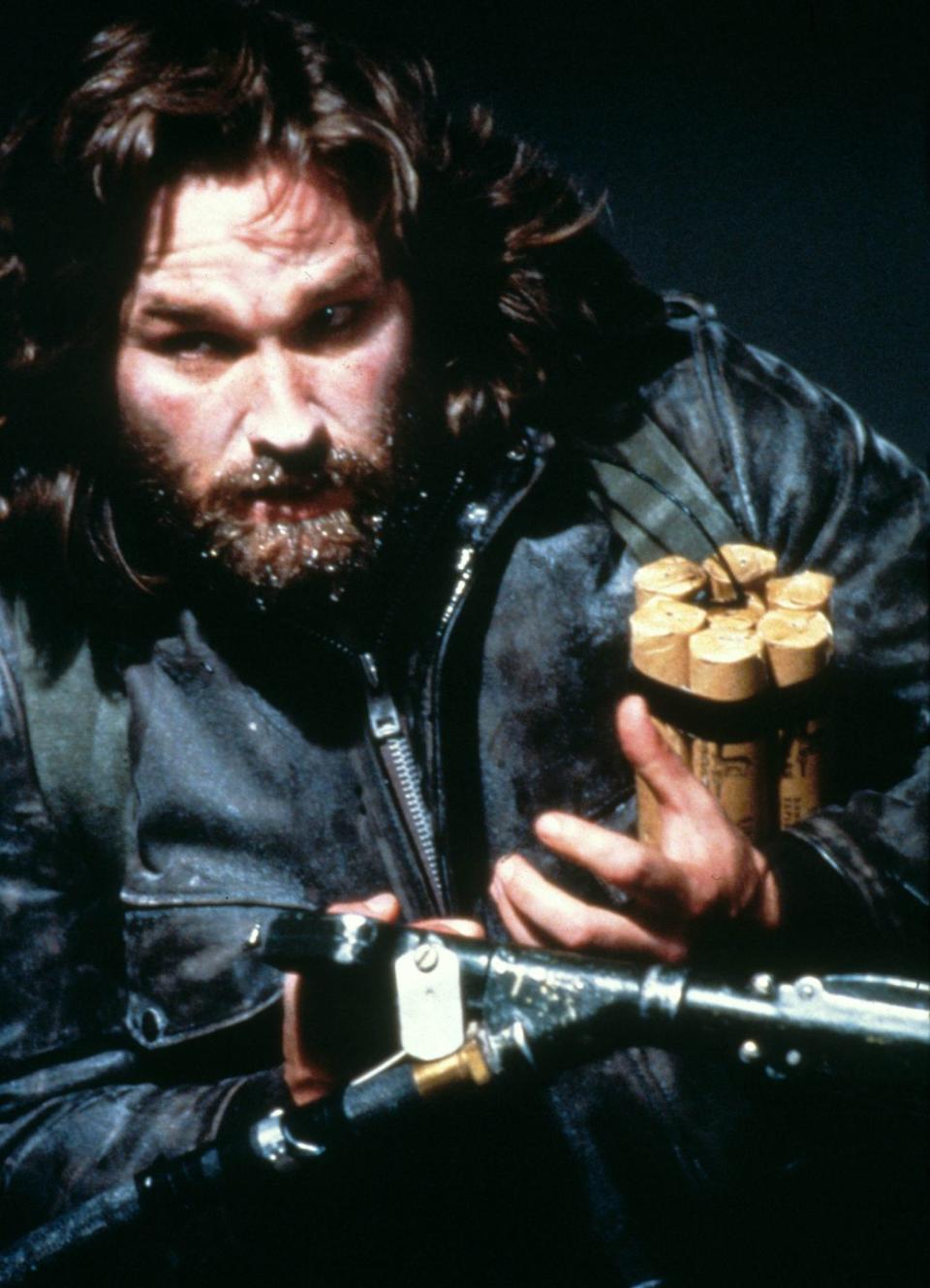38 Years Ago Today Two of the Best Sci-Fi Films of All Time Bombed in Theaters. What Happened?

Film critics get it wrong all the time. But even so, I can’t imagine that the profession has ever had a worse day on the job than June 25, 1982. If you’re a rabid sci-fi nerd (guilty as charged), today marks a special sort of anniversary. One that remains as bittersweet as it is utterly confounding. After all, it was on this day, 38 summers ago, that two indisputable classics directed by two unassailable masters were released in theaters only to be met by critical venom and relative indifference from ticket-buyers. I’m talking, of course, about Ridley Scott’s visionary future-shock brainteaser Blade Runner and John Carpenter’s gooey master class in sub-zero paranoia The Thing.
But first a little backstory...
It’s tempting to look back with the benefit of hindsight and wonder how two movies that targeted the same exact demographic could have been scheduled to open on the same weekend. Why weren’t they spaced out a little? Today, of course, there are armies of highly-paid statisticians who crunch tons of numbers to circumvent that exact problem. But the movie business was a different beast in 1982. It also turned out to be a ridiculously loaded boom-year for science fiction movies—an embarrassment of intergalactic riches. In addition to Blade Runner and The Thing, 1982 also gave us Poltergeist, Mad Max 2: The Road Warrior, Tron, Star Trek II: The Wrath of Khan, Conan the Barbarian, and Steven Spielberg’s 800-pound box-office gorilla, E.T.: The Extra-Terrestrial all within the same barely-ajar ten-week summer window. But still, why not spread the wealth around a little? Well, as with just about all things, you can pin the blame on Star Wars. After all, both 1977’s A New Hope and 1980’s The Empire Strikes Back opened in May. If you worked at a major studio in 1982, the new box-office conventional-wisdom dictated that sci-fi geeks came out in hordes when air-conditioning was on the menu.
It wasn’t just the slew of competition that doomed these two films that are now regarded as integral pieces of the sci-fi canon. Both, in their own ways, had had ominously rocky roads to the big screen.

Let’s start with Blade Runner. After establishing his genre bona fides with 1979’s Alien, Ridley Scott had no shortage of options for his follow-up film. But by the time that he signed on for his adaptation of Philip K. Dick’s thickety 1968 novel Do Androids Dream of Electric Sheep?, the seemingly unfilmable project had been bouncing around for years. At one point, Martin Scorsese was flirting with directing it. But Dick, a tough customer if ever there was one, raged at every single script he’d seen. Then, Hampton Fancher, the credited writer of the version we now know, finally cracked it—or came close enough—in 1977. And in a fortuitous confluence of events, it fell into Scott’s hands just after he walked away from directing an adaptation of Frank Herbert’s Dune (which would become an even more reviled celluloid disaster helmed by David Lynch in 1984).
With its endless false starts and ever-escalating development budget, Blade Runner’s initial backers, Filmways, seemed all too happy to withdraw from the project and sold it to The Ladd Company. Principal photography began on March 9, 1981. As has been well-reported, Scott and his leading man, Harrison Ford, clashed mightily. And when test audiences complained about the film’s byzantine plot about a futuristic gumshoe hunting rogue replicants in a dystopian future, Scott caved to studio pressure and called Ford back in to record a noir-ish bit of voice-over narration that the actor hated. “When we started shooting it had been tacitly agreed that the version of the film that we agreed upon was the version without voiceover narration,” Ford groused in a 1992 interview. “It was a fucking nightmare. I thought that the film had worked without the narration…. I went kicking and screaming into the studio to record it.” This will be no surprise to anyone who’s ever listened to Ford’s sleepy, can’t-be-bothered monotone in the theatrical cut of Blade Runner.

Meanwhile, in the opposing corner, there was The Thing. By 1982, it was hard to imagine a director on a hotter winning streak than John Carpenter. Beginning with 1976’s low-budget and whiteknuckle-tense siege flick Assault on Precinct 13, he’d prodigiously cranked out Halloween, The Fog, and Escape From New York (not to mention the TV movies Someone’s Watching Me! and Elvis) at a caffeinated, rat-a-tat clip. Adapted from John W. Campbell’s chilling 1938 novella Who Goes There?, The Thing had been turned into a movie once before. And a damned fine one—Christian Nyby and Howard Hawks’ 1951 Cold War-era allegory The Thing From Another World. Carpenter was such a fan of Hawks’—and of that movie in particular—that eagle-eyed viewers of Halloween will recall Nyby and Hawks’ film playing on TV in the background as masked maniac Michael Myers comes for Jamie Lee Curtis’ babysitter Laurie Strode. It was a movie lover’s nod to one of his heroes that would, in time, take on the feeling of a prophecy.
Universal approached Carpenter to direct The Thing first. But the director couldn’t fathom how he could possibly make a version that improved on Hawks’. And after the studio’s second choice, The Texas Chain Saw Massacre’s Tobe Hooper parted ways with Universal (the studio hated his script), the project was dumped into development purgatory. Ironically, it was only after the success of Ridley Scott’s Alien, that the studio pulled it out of the mothballs and went back to Carpenter a second time. This time, they got their man, who tapped his Escape From New York star Kurt Russell to head up an ensemble cast of Antarctic researchers whose base camp is invaded by an insidious, body-snatching alien with a sweet tooth for splattery, stomach-churning gore (courtesy of wunderkind make-up f/x maestro Rob Bottin). Like Blade Runner, The Thing was meant to be ambiguous, forcing Carpenter to shoot multiple endings.
As the summer of 1982 approached, both Blade Runner and The Thing weren’t even a blip on the public’s radar. All anyone could talk about was Spielberg’s cute and cuddly, Reese’s Pieces-loving alien. Yes, moviegoers wanted to see science fiction movies, just not the kind that came with unhappy endings and more thorny questions than feel-good answers. E.T. opened on June 11, 1982, to $11.8 million and would spend 16 weeks at No. 1. It would also end up grossing $435 million domestically and another $358 million abroad as gravy. Coming just two short weeks later, both Scott and Carpenter never stood a chance.
The first wave of bad news for Blade Runner came when the nation’s critics finally laid their eyes on the film and rushed back to their typewriters to render their verdicts, only stopping on the way to sharpen their shivs. Of the two films, Blade Runner faired slightly better. Still, The Los Angeles Times said that Scott’s film was so slow that they called it “Blade Crawler”. Variety, for its part, complained about Blade Runner’s “unrelenting grimness.” The dean of American film criticism, Pauline Kael, argued that “Scott seems to be trapped in his own alleyways, without a map.” And while Roger Ebert admitted that the film looked “sensational”, he summed up by saying that it was “a failure as a story.” Ouch!
Essentially dismissed as a $28 million art film, Blade Runner would eke out just $26 million at the box office by the time all was said and done, putting it well outside the year’s top-20 grossing films. It ended up at No. 29, uncomfortably shoe-horned between Victor Victoria and Fast Times at Ridgemont High. Adding insult to injury, its mastermind, Philip K. Dick, would pass away from a heart attack three months before the film opened. He was spared the scathing reviews, but also its eventual elevation into one of sci-fi’s sacred texts.
As for The Thing, the nation’s critics didn’t even bother to qualify their pans with the occasional compliment. They were too thirsty for blood. In The New York Times, Vincent Canby wrote: “John Carpenter’s The Thing is a foolish, depressing, overproduced movie that mixes horror with science fiction to make something that is fun as neither one thing or the other…it qualifies only as instant junk.” Ebert, again, called it a “barf-bag movie”, “a geek show, a gross-out movie in which teenagers can dare one another to watch the screen.” Even Cinefantastique—a ‘zine published by and for the precise audience that Carpenter was courting—ran a cover story posing the friendly-fire question: “Is This the Most Hated Movie of All Time?”
The Thing would open in eighth place in its first weekend before limping its way to a total of $19 million at the box office by the merciful end of its theatrical run. Meanwhile, Universal, who had seduced Carpenter to helm the film by signing him to a fat multi-picture deal, pulled the plug on his contract and sent him packing. The failure of The Thing would rattle Carpenter’s confidence for years to come. It was his first flop—and it stung. “I lost lots of jobs because of The Thing,” Carpenter told Empire in 2017. “The reaction was extremely tough to take. My career would have been different had it been financially successful.”
So how did the critical and public consensus on these two movies change? The answer is fairly simple: Home video. As Blade Runner and The Thing vanished from theaters, they found second lives in the rec rooms and basements of the very people who had steered clear of them in theaters. There, you could watch and re-watch these films and dissect them like sci-fi versions of the Dead Sea Scrolls. The initial damning verdict would end up doing a one-eighty over time, in some cases inspiring young VHS-obsessed film buffs to become future directors themselves—directors who championed and prosthelytized for these once-dismissed masterpieces. In the case of Blade Runner, Scott’s film also had the added benefit of being re-released in 1992 in a Director’s Cut version that eighty-sixed Ford’s voiceover narration, added a crucial unicorn dream sequence, and scrapped the film’s “happy ending”, leading to a wave of re-evaluation.
Today, Scott and Carpenter’s box-office misfires are evidence of a second—and more hard-won—path to “classic film” status. Yes, some movies are anointed on delivery. But others, like these twin “failures” from the summer of 1982, take a longer and more winding path to the pantheon. These movies need time to marinate and lodge themselves in the public consciousness. They are of their time, but also ahead of their time, patiently waiting for their moment to finally arrive. The waiting can be endless and painful and it may never come. But if and when it does, their vindication in the appeals court of film history can be sweeter than if they were accepted right from the start.
You Might Also Like

